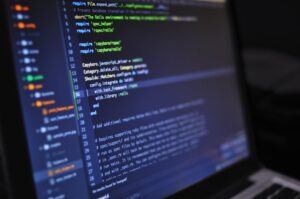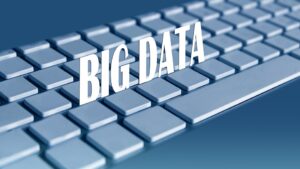The digital age is fast-paced and demands a lot of employees, which is why artificial intelligence integration is vital. However, you can only get the most out of this technology if you know how to use it. Here are some tips on AI implementation in the workplace.
“Employees must be more productive to keep up with clients and competitors.”
Do Employees Need to Be More Productive?
Industries are rapidly evolving, consumer demand is sky-high and the expectation for constant efficiency has become standard. Still, employees haven’t caught up with the times. The growth rate of workplace productivity in the United States has stagnated since 2005 despite technology advancing faster than ever before.
Employees must be more productive to keep up with clients and competitors. In the digital age, doing business requires speed and consistency. Even if you have a fantastic team meeting all their deadlines, they could benefit massively from such improvements.
Why Should You Use AI to Improve Productivity?
Your workplace productivity will only improve if your employees aren’t overwhelmed, overworked or chronically stressed. Those who experience burnout often feel detached and disengaged at work. You must address these root causes to improve their efficiency.
Even if you feel you’re successfully controlling workplace stress, you might need help. In fact, over 75% of employees in the United States feel their employers don’t manage burnout properly. AI integration is one of the only solutions that can simultaneously lighten workloads, automate tasks and train on the go.
AI integration leads to better performance and retention rates, resulting in higher productivity. People are much more likely to enjoy their jobs and do outstanding work when they feel supported. Even if your workplace runs smoothly and everyone is passionate about what they do, they’ll benefit from an autonomous, versatile tool.
“It doesn’t matter how you use AI — studies show it consistently leads to efficiency improvements in all kinds of roles.”
How Does AI Impact Employee Productivity?
Since AI can learn quickly, process rapidly and perform autonomously, it’s the best productivity-boosting tool at your disposal. One study found workers who use ChatGPT complete tasks 40% faster and experience an 18% work quality improvement.
It doesn’t matter how you use AI — studies show it consistently leads to heightened efficiency in all kinds of roles. You’ll see improvements whether you use a machine learning variant to create client profiles or a generative model to answer employees’ questions.
You don’t even need to use AI to automate tasks — you can use it in a supportive role. In one study, a chatbot helped workers resolve 14% more customer complaints per hour. Even though they only used it indirectly, it resulted in a massive, long-term improvement.
“Some of your workers could increase their productivity by 35% using AI.”
Tips on Making Your Workplace More Productive With AI
Although AI provides benefits in all kinds of roles, you still need to have a plan of action before getting to work. Here are some tips on using it to make your workplace more productive.
-
Set Realistic Goals
AI is a powerful tool, but you can’t expect your productivity to double overnight. You can only make your workplace more efficient if you apply it correctly and have realistic expectations. Humans can only improve so much — even with the help of the best technology available.
-
Establish a Baseline
While some of your workers could increase their productivity by 35% using AI, you won’t know how much they improve unless you know their baseline. Before integrating algorithms into your daily routine, ensure you have quantifiable data to reference. Make sure you get measurements for everything you plan on tracking in the future.
-
Choose the Right Metrics
A higher number of closed tasks doesn’t necessarily translate to better productivity. After all, more complex assignments typically take longer to finish. To accurately measure employee efficiency, you must know which metrics and performance indicators to track.
-
Ask for Feedback
Your team is one of the best resources you have. While anything can look good on paper, the real world is messy — the results of your AI integration may not be what you expect. Ask your employees for feedback before and during the process to understand how it performs. It’ll give you crucial insight and help you find potential areas of improvement.
-
Track Applications Separately
You can use AI to automate administrative tasks, analyze data sets or chat with your staff. While you could measure productivity across the board, tracking everything separately is best. You may realize one application has helped dramatically while another has made only a minor improvement. This kind of insight will help you as you adapt your process.
AI Can Transform Your Workplace
AI is one of the only tools capable of autonomous adaptation and engagement. You can increase your completion rate and the quality of your work without lifting a finger. No matter how you use it, you’ll see consistent improvements in your workplace.









